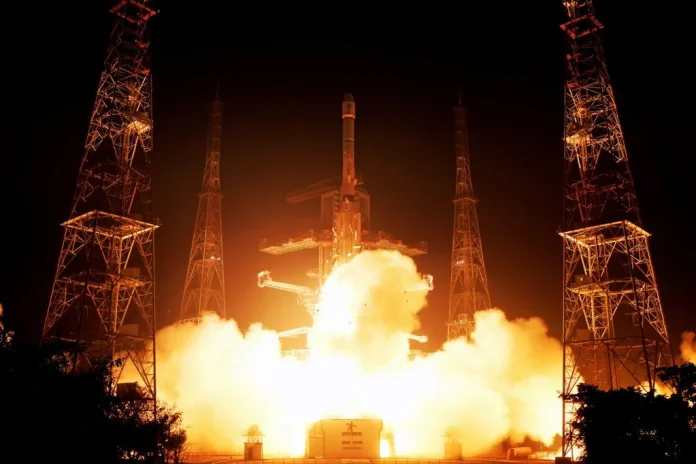SRIHARIKOTA, Jan 29: India’s space agency, ISRO, celebrated a historic milestone on Wednesday morning with the successful launch of its 100th mission. The launch took place at 6:23 a.m. from the Sriharikota spaceport in Andhra Pradesh, where a Geosynchronous Satellite Launch Vehicle (GSLV) lifted off, carrying the NVS-02 navigation satellite into orbit.
Announcing the success on X, ISRO stated: “LIFTOFF! The GSLV-F15 has successfully taken flight, carrying NVS-02 into its planned orbit. Stay tuned for more mission updates!”
Union Minister of State for Science and Technology, Dr. Jitendra Singh, hailed the achievement as a “historic moment,” congratulating ISRO on reaching this significant milestone. He remarked in a post on X: “It’s a privilege to be associated with the Department of Space at the historic moment of this record feat.” Dr. Singh added, “From a humble beginning by Vikram Sarabhai, Satish Dhawan, and a few others, it has been an amazing journey. And a quantum leap after PM Narendra Modi ‘unlocked’ the Space sector and instilled the confidence that ‘sky is not the limit.’”
The GSLV-F15 mission marks the 17th flight of the Geosynchronous Satellite Launch Vehicle (GSLV) and the 11th successful mission utilizing an indigenous cryogenic stage. This launch is also the 8th operational flight of GSLV featuring the indigenous cryogenic stage.
The NVS-02 satellite is a crucial addition to India’s Navigation with Indian Constellation (NavIC) system. NavIC is a regional navigation satellite system designed to provide precise Position, Velocity, and Timing (PVT) services to users in India and up to 1,500 km beyond its borders. With this launch, India’s Regional Navigation Satellite System is updated from four to five satellites, enhancing the system’s service reliability and performance.
The NVS-02 satellite represents the second generation of NavIC satellites. It features a standard I-2K bus platform, a lift-off mass of 2,250 kg, and a power handling capability of around 3 kW. Its navigation payload includes L1, L5, and S bands, while its ranging payload operates in the C-band. The satellite will be positioned at 111.75 degrees E, replacing IRNSS-1E.
NavIC will continue offering two types of services: Standard Positioning Service (SPS) and Restricted Service (RS). SPS will provide position accuracy of better than 20 meters and timing accuracy of better than 40 nanoseconds across the service area, further enhancing India’s space capabilities and regional navigation services.

